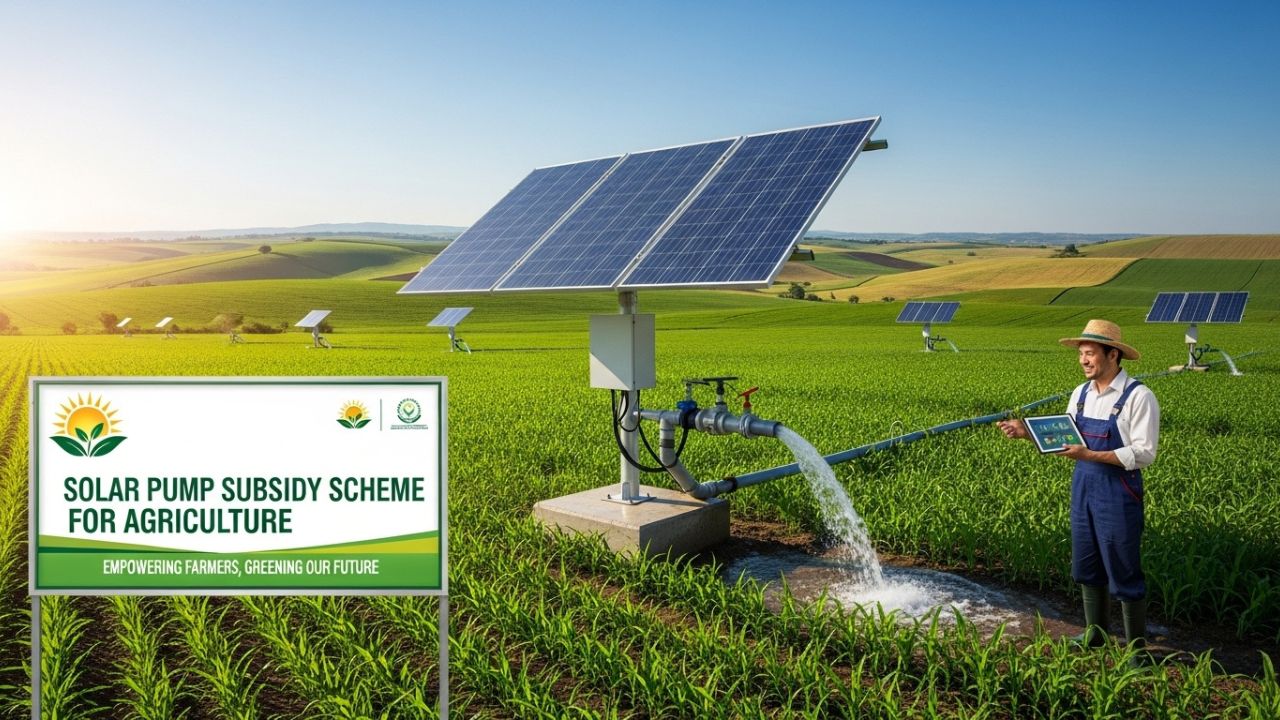Introduction
Tamil Nadu, a state with a significant agricultural sector, heavily depends on groundwater irrigation. To promote sustainable farming and reduce dependence on conventional electricity and diesel, the Tamil Nadu government has introduced a solar pump subsidy scheme aimed at farmers. This scheme provides financial assistance for installing solar-powered water pumps, enabling farmers to adopt green energy for irrigation, reduce electricity bills, and improve crop yield. The solar pump subsidy scheme aligns with India’s broader renewable energy goals and supports rural electrification.
Understanding the Solar Pump Subsidy Scheme
Objective of the Scheme
The scheme aims to:
- Ensure uninterrupted power supply to farmers for irrigation through solar pumps.
- Promote the use of clean energy, reducing the carbon footprint of agriculture.
- Reduce electricity subsidies by moving away from free power for agriculture.
- Foster sustainable water management by providing reliable and efficient pumping solutions.
Subsidy Structure
Tamil Nadu follows a tiered subsidy model offering between 60% and 80% subsidy depending on the farmer category:
- 80% subsidy for small and marginal farmers belonging to the Adi Dravidar and Tribal communities.
- 70% subsidy for small, marginal, Adi Dravidar, and Tribal farmers.
- 60% subsidy for other farmers.
This subsidy covers the cost of solar pumpsets utilized for irrigation purposes and helps reduce upfront investment burdens.
Eligibility and Coverage
- All farmers in Tamil Nadu except those in Chennai district are eligible.
- Farmers’ groups can also apply.
- The scheme covers off-grid standalone solar-powered pumpsets.
- Capacity typically ranges from 1 HP to 10 HP depending on water demand and borewell depth.
Application Process for Farmers
Approach the Agricultural Engineering Department (AED)
Farmers need to contact the Assistant Executive Engineer (AE) at the revenue division or Agriculture Engineering Department responsible for their area. This office handles subsidy applications and technical assessments.
Submit Application and Documents
Applicants must provide proof of land ownership or lease, Aadhaar identification, and other relevant certificates depending on their category.
Technical Feasibility and Site Inspection
AED engineers inspect the proposed installation site, evaluate the water source, and assess the pump capacity requirements.
Approval and Subsidy Sanction
Once accepted, farmers receive sanction orders outlining the subsidy amount, terms, and conditions.
Material Procurement and Installation
Farmers can procure solar pumpsets from approved vendors. Installation is supervised, ensuring compliance with technical specifications.
Final Inspection and Commissioning
A final site inspection is conducted before commissioning the solar pump system for agricultural use.
Read Also: Commercial Rooftop Solar System Payback in India 2025: A Complete Guide for Businesses
Financial Assistance and Cost Savings
- Farmers receive substantial upfront subsidies, reducing out-of-pocket expenses.
- Operating solar pumps incur no electricity costs, leading to significant savings compared to diesel or grid-based pumps.
- The scheme promotes longer-term financial sustainability with minimal maintenance expenses.
TANGEDCO’s Role in Solar Pump Integration
The Tamil Nadu Generation and Distribution Corporation (TANGEDCO) coordinates power supply integration and provides technical feasibility assessment for grid-connected solar pumps if any. This coordination ensures compatibility with the local grid infrastructure for hybrid use cases.
Success Stories and Impact Analysis
Many farmers have benefited from the scheme, witnessing improved irrigation access and reduced operational costs. With solar-powered irrigation available for 6-8 hours daily during daylight, crop yields have increased. The use of solar pumps also mitigates the environmental impact by reducing diesel consumption.
Case examples include the Nilgiris district, where solar pumps have replaced diesel-driven engines, enhancing sustainable agriculture practices.
Tips for Maximizing Benefits
- Farmers on the TANGEDCO free power connection waitlist can opt for solar pumps by relinquishing their application for free connections.
- Seek assistance from Agricultural Extension Services for technical guidance.
- Choose pumps with optimal capacity suited to specific irrigation needs to maximize efficiency.
- Maintain solar pump systems as per vendor instructions for longevity.
Common FAQs
- Who can apply for the solar pump subsidy in Tamil Nadu?
All farmers except those in Chennai district. Farmer groups are also eligible. - What subsidy amount can I get?
Subsidy varies from 60% to 80% depending on farmer category. - How do I apply?
Applications are submitted to the Assistant Executive Engineer of the Agricultural Engineering Department in your area. - Can I switch from diesel or grid pumps to solar pumps?
Yes, switching is encouraged under the scheme to reduce costs and emissions. - Does the solar pump work during cloudy days?
Solar pumps primarily work during sunny hours; some systems are hybrid, integrating grid power or batteries for uninterrupted operation. - Is maintenance support available?
Maintenance training and vendor support are part of the installation process.
Conclusion
Tamil Nadu’s Solar Pump Subsidy Scheme presents an excellent opportunity for farmers to transition to clean, sustainable irrigation methods while saving on operational costs. The scheme reflects a concerted effort by the state government to modernize agriculture using renewable energy technologies, reduce fossil fuel dependence, and improve water resource management. By following the outlined application process and leveraging available subsidies, farmers across Tamil Nadu can benefit from reliable solar-powered irrigation, contributing to both economic upliftment and environmental sustainability.
